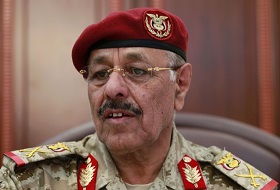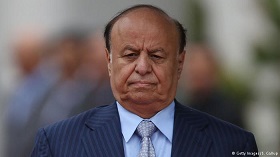Yet another revolution last September has handed the reins of power to Ansar Allah, the political wing of the al-Houthi movement, which de facto controls all of northern Yemen, including the Sana’a airport and the country’s main port of al-Hudaydah. The only exception is the province of Marib, currently a theater of fierce fighting.
Yet another revolution last September has handed the reins of power to Ansar Allah, the political wing of the al-Houthi movement, which de facto controls all of northern Yemen, including the Sana’a airport and the country’s main port of al-Hudaydah. The only exception is the province of Marib, currently a theater of fierce fighting.
In July 2013, Egypt created a counterrevolutionary precedent when the forces ousted in 2011 regained power, prompting a process by which a single event has evolved into a rule. Through a series of toppled authoritarian regimes (Tunisia, Egypt, Yemen, etc.), Arab societies only proved their penchant for the domino effect, with the protesting masses of all countries invariably looking around at their neighbors. Yemen definitely offers a vivid example of continuity in the behavioral models of the Arab Spring. In early 2012, after Ali Abdullah Saleh had already left the presidential post,[1] the Yemeni opposition refused to leave the streets, claiming that the vacuum could be filled by Islamists, as what had happened in Egypt. These fears were absolutely reasonable, as since early 2012, power gradually flowed toward the al-Ahmar family which was represented by the sons of Hashid Abdullah al-Ahmar, the leader of the tribal confederation who died back in 2007. His main allies used to be the Islamist party al-Islah and the Yemeni Muslim Brotherhood, who gained ground parallel with the rise of their Egyptian galvanizers.[2] Acting president Abd Rabbuh Mansur Hadi, known for an absolute lack of political ambitions and nicknamed the silent vice-president, also turned into a tacit supporter of the al-Ahmar clan.[3] But fortune favored the powerful family only until the Muslim Brotherhood was in power in Egypt, as the overthrow of Muhammad Morsi and the subsequent pan-Arab isolation of the association and its foreign cells virtually emasculated the Yemeni interim government. At the same time, it was Yemen that went in step with Egypt to see its protest potential caused by the Arab Spring used for a second revolution.
Following the collapse of the National Dialogue Conference (NDC) in early 2014, the key political forces concentrated around the two opposite camps, i.e. the General People’s Congress (GPC) headed by Ali Saleh who was ousted during the Arab Spring, and the al-Ahmar clan led by Sadiq al-Ahmar. Over the past three years, these two forces have emerged as the two conflicting parties searching for allies among other domestic actors. The al-Ahmar family attracted the al-Islah and Muslim Brotherhood, whereas the General People’s Congress has allied with the BAATH party[4] and the Union of Popular Forces, and also moved quietly toward the Ansar Allah.
After taking office on February 25, 2012, acting president Mansur Hadi eliminated the traditional military districts in order virtually dissolve the national army. More than that, the new governors dissolved the Republican Guard headed by a son of Ali Abdullah Saleh and converted the force into a reserve contingent.[5] Finally, the military reforms boiled down to providing each political entity with its own military grouping. Interestingly, the al-Houthi army, named after its leader Hussein Badreddin al-Houthi, who was killed in 2006,[6] emerged as the strongest. They recently won a series of major battles and markedly expanded their territory to cover almost the whole of northern Yemen.[7] Even the Saudis are still trying to restore control over the lands captured by the Ansar Allah.
The only force able to rival the al-Houthi military might before the September 21, 2014 revolution was the de jure disbanded but de facto active 1st Armored Division under the command of General Ali Mohsen al-Ahmar, stepbrother of Ali Saleh, who had risen to the position of President Mansur Hadi's military advisor. However, after September 21, the al-Ahmar clan was utterly defeated by the al-Houthi, and their leaders, including Ali Mohsen, had to flee the country.[8]
However, of greatest interest today appears to be the tacit alliance of the General People’s Congress and the al-Houthi, something incredible only several years ago. Under the former president, the north of Yemen was the country's most unsafe area. The feud between the former regime and the al-Houthi is long-standing, as the president had to lead six military campaigns against the Ansar Allah. But in early 2014, the two forces closed ranks to confront the al-Ahmar rulers.[9]
Al-Ahmar Failure
The al-Ahmar family has actually repeated many of the mistakes made by the Muslim Brotherhood in Egypt. First of all, they were not good at finding ways to overcome the political crisis and make most of the political groupings happy, as evidenced by the outcomes of the National Dialogue Conference.[10] The al-Ahmar family failed to agree with its opponents in at least four of its nine working groups (the Saad problem, the South, transitional justice, and government). Because of this, the clan was significantly weakened, primarily due to the planned federalization of the country. Out of all projects under consideration by the NDC, the final scheme envisaged the establishment of six federal districts, i.e. Hadramout, Aden, Janat, Tahama, Azal and Saba. The division has caused wild disapproval, since the southerners opposed splitting their lands into Hadramout and Aden, instead insisting on preserving South Yemen as an entity of the future federation.[11] Saad, the al-Houthi homeland, and the provinces of Amran, Sana'a and Dhamar were incorporated into the landlocked and economically unhealthy Azal District.
One more of al-Ahmar's initiatives was rejected by the National Dialogue Conference which was unwilling to impose a 10-year-long ban on former military officers claiming the presidency,[12] since the primary target was Ahmed Saleh, the ex-president's son who is still seen as a possible candidate.[13]
As a result, the al-Ahmar clan and the Muslim Brotherhood broke with all other political forces, with the problem of the south still unsolved. Meanwhile, the area is still being shattered by violent demonstrations by those who want to see the region as a separate entity within the borders of the former People's Democratic Republic of Yemen. Moreover, the increasingly Islamic Sana's regime was a nonstarter for the southerners who still remember the year 1994 when the North began treating the South in a hegemonic manner proceeding from the ideas of the al-Islah spiritual leaders, first of all al-Zindani and al-Dailani who declared the jihad against the southern unfaithful.[14]
The al-Ahmar union with the al-Houthi was also a flop. Moreover, with an active role played by al-Islah, Yemen obtained the an-Nusrah, a Salafi group, which was about to confront the Ansar Allah. Such tactics had existed in the second half of the 2000s when the regime used Salafi radicals in its domestic exploits. The practice is normally associated with General Ali Mohsen al-Ahmar, who led six military campaigns in Saad from 2004 to 2010 and frequently employed the Salafi against the al-Houthi.
Finally, the al-Ahmar family openly confronted the General People's Congress and personally Ali Saleh, with many attempts made by the provisional government to arrest the ex-president.[15] Besides, it was Ali Mohsen who in 2011 commanded the armored division that was the key military unit in helping the Arab Spring participants. In fall 2011, the fiercest battles in the al-Khasaba district of Sana's took place between the forces loyal to Saleh and al-Ahmar.
***
With power flowing since early 2012 toward the al-Ahmar clan, represented by al-Islah and the allied Muslim Brotherhood and the Salafi, all their opponents have chosen to unite and go to extremes. More fuel on the fire came from the growing clout of Ali Mohsen, who became President Hadi's military advisor and made no bones about his presidential ambitions (a key cause of the conflict between Saleh and Ali Mohsen before the Arab Spring is known to have been the ex-president's willingness to transfer the power to his son rather than to the stepbrother). This prospect was totally unacceptable for the al-Houthi, Congress and the southerners, which led to the September 21 Revolution and the flight of the al-Ahmar family from the country. While the Ansar Allah joined forces with the Yemeni tribes and some Congress members to virtually control the north of Yemen.
Today, the future of the South seems to be the key issue. The al-Houthi continue to negotiate with al-Hiraq on coexistence within the same state. However, a united Yemen remains something extremely blurred. This is why Abd Rabbuh Mansur Hadi is still in his interim office. If ousted, he may flee to his southern homeland, only bolstering Aden separatism and weakening the al-Houthi who will be accused of splitting the country apart.
[1] Isaev L.M., Shishkina A.R. Syria and Yemen: the Unfinished Revolutions. – Moscow: URSS, 2012.
[5] Serebrov S.N. Yemen: National Dialogue and Separatism in the South // Assessment and Ideas: Newsletter of RAS Institute for Oriental Studies. Volume 1, №5, 2014. P. 9.
[7] Ozherelyeva M.V. One More Country for the Shiites // Kommersant, №223, 12/09/2014. P. 8.
[9] Ozherelyeva M.V. One More Country for the Shiites // Kommersant, №223, 12/09/2014. P. 8.
[10] Resolutions are available at the NDC official website: www.ndc.ye.
[11] Reports and speeches are available at the NDC official website: www.ndc.ye.
[12] Isaev L.M., Ozherelyeva M.V. Arab Fall? // Reserve Stock, №3, 2014. Pp. 29-38.
[13] Isaev L.M., Shishkina A.R. Syria and Yemen: the Unfinished Revolutions – Moscow: URSS, 2012.
[14] In 1994, Sana'a government and Yemen Socialist Party in Aden headed by Ali Salem al-Beed engaged in armed clashes, which resulted in the defeat of the southerners. Sheikhs al-Zidani and al-Dailani issued fatwas against the southerners to justify the massive violations of political and economic rights on behalf of the northerners, as well as the removal of the socialists from the government. (see: Day, S. Regionalism and Rebellion in Yemen. A Troubled National Union. – Cambridge: Cambridge University Press, 2012.).






